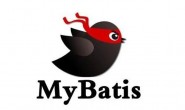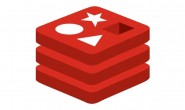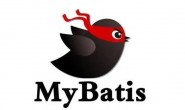点击“终码一生”,关注,置顶公众号
每日技术干货,第一时间送达!
1
Mybatis提供对缓存的支持,但是在没有配置的默认情况下,它只开启一级缓存,二级缓存需要手动开启。
一级缓存只是相对于同一个SqlSession而言。 也就是针对于同一事务,多次执行同一Mapper的相同查询方法,第一查询后,MyBatis会将查询结果放入缓存,在中间不涉及相应Mapper的数据更新(Insert,Update和Delete)操作的情况下,后续的查询将会从缓存中获取,而不会查询数据库。
二级缓存是针对于应用级别的缓存,也就是针对不同的SqlSession做到缓存。 当开启二级缓存时,MyBatis会将首次查询结果存入对于Mapper的全局缓存,如果中间不执行该Mapper的数据更新操作,那么后续的相同查询都将会从缓存中获取。
2
根据二级缓存的介绍发现,如果Mapper只是单表查询,并不会出现问题,但是如果Mapper涉及的查询出现 联表 查询,如 UserMapper 在查询 user 信息时需要关联查询 组织信息,也就是需要 user 表和 organization 表关联,OrganizationMapper 在执行更新时并不会更新 UserMapper 的缓存,结果会导致在使用相同条件 使用 UserMapper 查询 user 信息时,会等到未更新前的 organization 信息,造成数据不一致的情况。
2.1、数据不一致问题验证
查询SQL
SELECT
u.*, o.name org_name
FROM
user u
LEFT JOIN organization o ON u.org_id = o.id
WHERE
u.id = #{userId}UserMapper
UserInfo queryUserInfo(@Param("userId") String userId);UserService
public UserEntity queryUser(String userId) {
UserInfo userInfo = userMapper.queryUserInfo(userId);
return userInfo;
}调用查询,得到查询结果(多次查询,得到缓存数据),这里 userId = 1,data为user查询结果
{
"code": "1",
"message": null,
"data": {
"id": "1",
"username": "admin",
"password": "admin",
"orgName": "组织1"
}
}查询 对应 organization 信息,结果
{
"code": "1",
"message": null,
"data": {
"id": "1",
"name": "组织1"
}
}发现和user缓存数据一致。
执行更新 organization 操作,将 组织1 改为 组织2,再次查询组织信息
{
"code": "1",
"message": null,
"data": {
"id": "1",
"name": "组织2"
}
}再次查询user信息,发现依旧从缓存中获取
{
"code": "1",
"message": null,
"data": {
"id": "1",
"username": "admin",
"password": "admin",
"orgName": "组织1"
}
}造成此问题原因为 organization 数据信息更新只会自己Mapper对应的缓存数据,而不会通知到关联表organization 的一些Mapper更新对应的缓存数据。
2.2、问题处理思路
-
在 Mapper1 定义时,手动配置 相应的关联 Mapper2
-
在 Mapper1 缓存 cache1 实例化时,读取 所关联的 Mapper2 的缓存 cache2相关信息
-
在 cache1 中存储 cache2 的引用信息
-
cache1 执行clear时,同步操作 cache2 执行clear
3
打开二级缓存,本地项目使用 MyBatis Plus
mybatis-plus.configuration.cache-enabled=true主要用到自定义注解CacheRelations,自定义缓存实现RelativeCache和缓存上下文RelativeCacheContext。
注解CacheRelations,使用时需标注在对应mapper上
@Target(ElementType.TYPE)
@Retention(RetentionPolicy.RUNTIME)
public @interface CacheRelations {
// from中mapper class对应的缓存更新时,需要更新当前注解标注mapper的缓存
Class<?>[] from() default {};
// 当前注解标注mapper的缓存更新时,需要更新to中mapper class对应的缓存
Class<?>[] to() default {};
}自定义缓存RelativeCache实现 MyBatis Cache 接口
public class RelativeCache implements Cache {
private Map<Object, Object> CACHE_MAP = new ConcurrentHashMap<>();
private List<RelativeCache> relations = new ArrayList<>();
private ReadWriteLock readWriteLock = new ReentrantReadWriteLock(true);
private String id;
private Class<?> mapperClass;
private boolean clearing;
public RelativeCache(String id) throws Exception {
this.id = id;
this.mapperClass = Class.forName(id);
RelativeCacheContext.putCache(mapperClass, this);
loadRelations();
}
@Override
public String getId() {
return id;
}
@Override
public void putObject(Object key, Object value) {
CACHE_MAP.put(key, value);
}
@Override
public Object getObject(Object key) {
return CACHE_MAP.get(key);
}
@Override
public Object removeObject(Object key) {
return CACHE_MAP.remove(key);
}
@Override
public void clear() {
ReadWriteLock readWriteLock = getReadWriteLock();
Lock lock = readWriteLock.writeLock();
lock.lock();
try {
// 判断 当前缓存是否正在清空,如果正在清空,取消本次操作
// 避免缓存出现 循环 relation,造成递归无终止,调用栈溢出
if (clearing) {
return;
}
clearing = true;
try {
CACHE_MAP.clear();
relations.forEach(RelativeCache::clear);
} finally {
clearing = false;
}
} finally {
lock.unlock();
}
}
@Override
public int getSize() {
return CACHE_MAP.size();
}
@Override
public ReadWriteLock getReadWriteLock() {
return readWriteLock;
}
public void addRelation(RelativeCache relation) {
if (relations.contains(relation)){
return;
}
relations.add(relation);
}
void loadRelations() {
// 加载 其他缓存更新时 需要更新此缓存的 caches
// 将 此缓存 加入至这些 caches 的 relations 中
List<RelativeCache> to = UN_LOAD_TO_RELATIVE_CACHES_MAP.get(mapperClass);
if (to != null) {
to.forEach(relativeCache -> this.addRelation(relativeCache));
}
// 加载 此缓存更新时 需要更新的一些缓存 caches
// 将这些缓存 caches 加入 至 此缓存 relations 中
List<RelativeCache> from = UN_LOAD_FROM_RELATIVE_CACHES_MAP.get(mapperClass);
if (from != null) {
from.forEach(relativeCache -> relativeCache.addRelation(this));
}
CacheRelations annotation = AnnotationUtils.findAnnotation(mapperClass, CacheRelations.class);
if (annotation == null) {
return;
}
Class<?>[] toMappers = annotation.to();
Class<?>[] fromMappers = annotation.from();
if (toMappers != null && toMappers.length > 0) {
for (Class c : toMappers) {
RelativeCache relativeCache = MAPPER_CACHE_MAP.get(c);
if (relativeCache != null) {
// 将找到的缓存添加到当前缓存的relations中
this.addRelation(relativeCache);
} else {
// 如果找不到 to cache,证明to cache还未加载,这时需将对应关系存放到 UN_LOAD_FROM_RELATIVE_CACHES_MAP
// 也就是说 c 对应的 cache 需要 在 当前缓存更新时 进行更新
List<RelativeCache> relativeCaches = UN_LOAD_FROM_RELATIVE_CACHES_MAP.putIfAbsent(c, new ArrayList<RelativeCache>());
relativeCaches.add(this);
}
}
}
if (fromMappers != null && fromMappers.length > 0) {
for (Class c : fromMappers) {
RelativeCache relativeCache = MAPPER_CACHE_MAP.get(c);
if (relativeCache != null) {
// 将找到的缓存添加到当前缓存的relations中
relativeCache.addRelation(this);
} else {
// 如果找不到 from cache,证明from cache还未加载,这时需将对应关系存放到 UN_LOAD_TO_RELATIVE_CACHES_MAP
// 也就是说 c 对应的 cache 更新时需要更新当前缓存
List<RelativeCache> relativeCaches = UN_LOAD_TO_RELATIVE_CACHES_MAP.putIfAbsent(c, new ArrayList<RelativeCache>());
relativeCaches.add(this);
}
}
}
}
}缓存上下文RelativeCacheContext
public class RelativeCacheContext {
// 存储全量缓存的映射关系
public static final Map<Class<?>, RelativeCache> MAPPER_CACHE_MAP = new ConcurrentHashMap<>();
// 存储 Mapper 对应缓存 需要to更新缓存,但是此时 Mapper 对应缓存还未加载
// 也就是 Class<?> 对应的缓存更新时,需要更新 List<RelativeCache> 中的缓存
public static final Map<Class<?>, List<RelativeCache>> UN_LOAD_TO_RELATIVE_CACHES_MAP = new ConcurrentHashMap<>();
// 存储 Mapper 对应缓存 需要from更新缓存,但是在 加载 Mapper 缓存时,这些缓存还未加载
// 也就是 List<RelativeCache> 中的缓存更新时,需要更新 Class<?> 对应的缓存
public static final Map<Class<?>, List<RelativeCache>> UN_LOAD_FROM_RELATIVE_CACHES_MAP = new ConcurrentHashMap<>();
public static void putCache(Class<?> clazz, RelativeCache cache) {
MAPPER_CACHE_MAP.put(clazz, cache);
}
public static void getCache(Class<?> clazz) {
MAPPER_CACHE_MAP.get(clazz);
}
}使用方式
UserMapper.java
@Repository
@CacheNamespace(implementation = RelativeCache.class, eviction = RelativeCache.class, flushInterval = 30 * 60 * 1000)
@CacheRelations(from = OrganizationMapper.class)
public interface UserMapper extends BaseMapper<UserEntity> {
UserInfo queryUserInfo(@Param("userId") String userId);
}queryUserInfo是xml实现的接口,所以需要在对应xml中配置<cache-ref namespace=“com.mars.system.dao.UserMapper”/>,不然查询结果不会被缓存化。如果接口为 BaseMapper实现,查询结果会自动缓存化。
UserMapper.xml
<mapper namespace="com.mars.system.dao.UserMapper">
<cache-ref namespace="com.mars.system.dao.UserMapper"/>
<select id="queryUserInfo" resultType="com.mars.system.model.UserInfo">
select u.*, o.name org_name from user u left join organization o on u.org_id = o.id
where u.id = #{userId}
</select>
</mapper>OrganizationMapper.java
@Repository
@CacheNamespace(implementation = RelativeCache.class, eviction = RelativeCache.class, flushInterval = 30 * 60 * 1000)
public interface OrganizationMapper extends BaseMapper<OrganizationEntity> {
}CacheNamespace中flushInterval 在默认情况下是无效的,也就是说缓存并不会定时清理。ScheduledCache是对flushInterval 功能的实现,MyBatis 的缓存体系是用装饰器进行功能扩展的,所以,如果需要定时刷新,需要使用ScheduledCache给到 RelativeCache添加装饰。
至此,配置和编码完成。
开始验证:
查询 userId=1的用户信息
{
"code":"1",
"message":null,
"data":{
"id":"1",
"username":"admin",
"password":"admin",
"orgName":"组织1"
}
}更新组织信息,将 组织1 改为 组织2
{
"code":"1",
"message":null,
"data":{
"id":"1",
"name":"组织2"
}
}再次查询用户信息
{
"code":"1",
"message":null,
"data":{
"id":"1",
"username":"admin",
"password":"admin",
"orgName":"组织2"
}
}符合预期。
来源:blog.csdn.net/qq_38245668/article/details/105803298
PS:防止找不到本篇文章,可以收藏点赞,方便翻阅查找哦。
往期推荐









